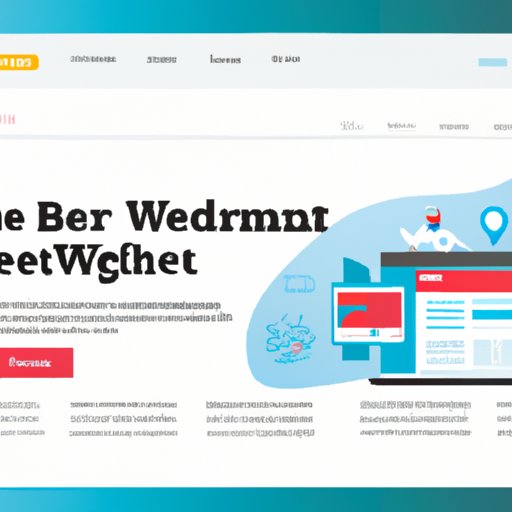Introduction
In today’s digital world, having a website is essential for any business to succeed. A website gives you an online presence and allows you to showcase your products or services to customers around the world. It also helps you build credibility and trust with potential customers, as well as offering a platform to engage with them.
A website is a collection of webpages that are connected to each other and accessible over the internet. It is made up of several components including the domain name, web hosting, design, content, search engine optimization (SEO) and promotion. In this guide, we will walk you through the steps you need to take to create a successful website for your business.
Determine Your Website Goals
Before you start creating your website, it’s important to determine what your goals are. Ask yourself: What do I want my website to achieve? Identifying your goals will help you create a website that meets your needs and reaches your desired audience.
You need to consider who you want to reach with your website. Are you targeting a local audience or a global one? Knowing your target audience will help you create content that resonates with them. You should also set measurable goals for your website. For example, if your goal is to increase sales, you can track how many visitors make a purchase on your website.

Choose a Domain Name and Web Hosting Provider
The first step in creating a website is choosing a domain name. Your domain name is the URL that people type into their browser to access your website. You should choose a domain name that is short, memorable and relevant to your business. When selecting a domain name, you should also check to see if it is available.
Once you have chosen a domain name, you will need to find a web hosting provider. A web hosting provider stores your website files and makes them available to users over the internet. There are many different types of web hosting providers, so you should research them to find one that meets your needs. Be sure to consider factors such as cost, storage space, bandwidth and customer support when selecting a web hosting provider.
Design Your Website
Now that you have your domain name and web hosting provider, you can start designing your website. Designing a website requires a lot of creativity and technical skills. You can use templates or hire a web designer to create your website. When designing your website, it’s important to understand the elements of good website design. These include usability, navigation, visuals, and content.

Add Content to Your Website
Adding content to your website is crucial to its success. Content is what engages visitors and encourages them to stay on your website. You should create content that is relevant to your target audience and speaks to their needs. Different types of content you can add to your website include text, images, videos, audio, and interactive elements.
Optimize Your Website for Search Engines (SEO)
Search engine optimization (SEO) is the process of optimizing your website to increase visibility and engagement. SEO involves optimizing website elements such as titles, descriptions, keywords, and images. It also includes building quality backlinks and utilizing social media to spread the word about your website. Implementing SEO strategies will help you rank higher in search engine results pages (SERPs) and drive more traffic to your website.
Promote Your Website
Once your website is live, you should promote it to reach more potential customers. Social media is a great way to spread the word about your website. You can also leverage email marketing to reach out to potential customers. Additionally, you can use paid advertising to get your website in front of the right people.
Measure the Results of Your Website
Once your website is up and running, you should track its performance. You can use analytics tools such as Google Analytics to measure website traffic, user engagement, and conversions. Analyzing your website data will help you identify areas for improvement and evaluate the effectiveness of your website.
Conclusion
Creating a website for your business can help you reach more potential customers and boost sales. The process of creating a website involves choosing a domain name and web hosting provider, designing your website, adding content, optimizing for search engines, and promoting your website. Finally, you should measure the performance of your website using analytics tools. Following these steps will help you create a successful website for your business.
(Note: Is this article not meeting your expectations? Do you have knowledge or insights to share? Unlock new opportunities and expand your reach by joining our authors team. Click Registration to join us and share your expertise with our readers.)
